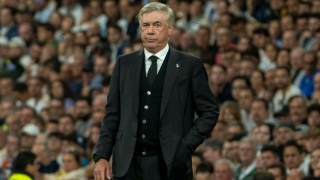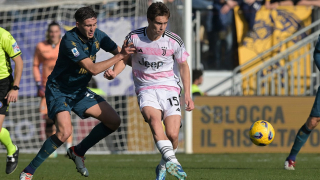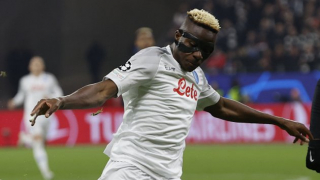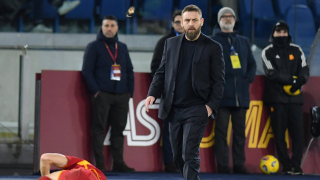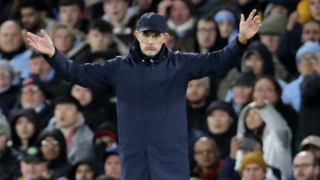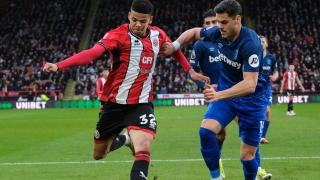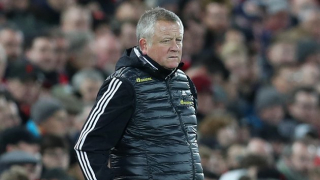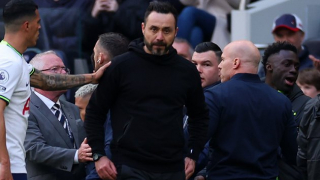Every now and then, the Champions League throws up a surprise. This season, Ajax have taken the competition by storm, eliminating two of the continent's giants, Real Madrid and Juventus, in consecutive rounds to reach the semi-finals against the odds.
The Dutch side have become the neutral's favourite thanks to their commitment to home-grown players, developing youth and playing some exciting football. And, having thrilled in the previous knockout stages, they are now one two-legged tie with Tottenham Hotspur away from a final with Barcelona or Liverpool.
Spurs may not hold the same fearsome reputation as Real Madrid or Juventus, though they represent a formidable opponent – just ask Pep Guardiola's Manchester City. But while the Premier League side are perhaps slight favourites for their upcoming semi-final clash, Ajax represent a significant threat to their chances of progress.
Here, we atTribalFootballlook at how Ajax got to this stage, focusing on their tactics and considering how Tottenham may want to approach them.
FLUID ATTACKING SHAPE WITH LOTS OF MOVEMENT
Ostensibly Ajax, as they have done for many decades, line up in a basic 4-3-3 formation. However, unlike the rigid, heavily possession-focused attacking strategies we've seen from them in recent years, they now play a highly fluid offensive game built on constant movement off the ball.
When building up, they aim to make the pitch as big as possible. This is done to stretch and play through the opponent's defensive shape, or to create free men that can progress the ball. Their full-backs push up, their centre-backs split and goalkeeper Andre Onana is involved between the central defenders.
This setup makes it difficult for the opposition to press high as there is a lot of ground to cover to do so. The only real way of closing all options is to man-mark, but doing so would simultaneously remove any chance of collective pressing and/or leave one man spare.
Frenkie de Jong often drops deep centrally, between the centre-backs in build-up. This was done in the quarter-final win over Juventus to enable a 3v2 when playing out. This numerical superiority enabled one of the outer centre-backs the freedom to drive forward with the ball at feet around the first line of pressure.
De Jong's midfield partners, Lasse Schone and Donny van de Beek, position themselves higher. The former plays a central role, occasionally dropping back to offer a passing option, while the latter moves up to support false nine Dusan Tadic.
When put under pressure, Ajax are not completely averse to being more direct. Onana often plays diagonals out to the full-backs, particularly if one of them is free on their flank, though long balls over the top are also sometimes used. If they do go from back to front directly, Van de Beek's high positioning in support of Tadic helps when it comes to winning second balls. It's worth noting that they average five more long balls per Champions League game than in the Eredivisie, despite the fact they generally have less possession on the continent.
When attacking, Ajax's shape is almost a 3-3-1-3: De Jong drops close to the centre-backs; Schone stays on roughly the same line as the advanced full-backs; and Van de Beek supports a fairly narrow front three as the wingers both tuck in quite often. There are a lot of interchanges and positional rotations between players in and around the final third to try and create separation, while the wingers also regularly leave their position and drift across to the far side to create overloads.
The sheer volume of attacking players they get into central areas causes problems for opponents, whose defensive lines are often occupied, leaving space for one of the Dutch side's full-backs to get free down their flank. From these positions, Ajax like to draw out the opposing full-back before quickly exploiting the opening channels in the opponent's back line.
Another interesting, and effective, aspect of their attacking play is the way Tadic and Van de Beek interact. The former often leaves the front line and drops to get on the ball in deeper areas and link moves. When this happens, the latter pushes on and occupies the opposition centre-backs.
These opposite movements cause a dilemma for defenders as they must choose between leaving their line to follow Tadic and creating space for Van de Beek to enter behind, or staying in their line and allowing Tadic to roam free.
INTENSITY WITHOUT THE BALL
When they defend, Ajax like to press high in a 4-2-1-3 shape. Tadic looks to split the opposition centre-backs while closing down the one with the ball, while both wingers occupy the inside channels, focusing on cutting passing lanes between the centre-backs and full-backs. Van de Beek varies between man-marking in midfield or moving up centrally to support Tadic, meaning that playing out through the centre is often difficult against the Eredivisie outfit.
In deeper areas, Erik ten Hag's side use some form of man-marking. Both De Jong and Schone in central midfield combine looking to cover their opposite men with trying to ensure space in the centre doesn't open up. Meanwhile, both full-backs aggressively track opposition wingers, and the centre-backs will try to follow any dropping striker to ensure he isn't an easy passing option.
This intensity is also seen in transition. When Ajax lose the ball they instantly try to regain it, often with three players. One closes the ball, while the others go man-to-man on nearby passing options to take away their time and space should they receive possession.
While only eight teams in this season's Champions League have averaged more possession than Ten Hag's men, only three sides have averaged more tackles per game, eight sides averaged more interceptions and 10 averaged more fouls. These statistics underline Ajax's aggression without the ball.
WHAT CAN SPURS DO?
In order to beat Ajax, Tottenham may be wise to line up in a 5-3-2 shape, as they have done on occasion this term. This setup would give them good presence in the centre of the pitch, making it harder for Ajax to build through this area and forcing their attacks wide more often.
Having three central defenders would also make it tougher for Ajax to open the channels in Spurs' defensive line, with an extra man allowing them greater coverage when their wing-backs go out to close down the opposition's advanced full-backs.
A more zonal defensive strategy would be advisable, as the rotations and interchanges of Ajax's attacking players make it difficult to implement a more man-oriented game. By focusing on maintaining their shape, keeping the channels narrow and reducing space between the lines, Mauricio Pochettino and his players can retain some semblance of control even without having the ball.
When attacking, Tottenham should look to exploit the extremely man-oriented nature of Ajax's midfielders. Intelligent playmakers such as Christian Eriksen and Dele Alli can use their movement to drag apart De Jong and Schone, potentially creating space centrally to move the ball in. Alternately, they could go long to Harry Kane and use his height advantage over the Dutch side's centre-backs to progress quickly.
Ultimately, even if Spurs put on an exceptional team performance the likelihood is they will find it tough. Ajax are confident, fearless and well-organised, and their surprise factor is wearing off by the round.

